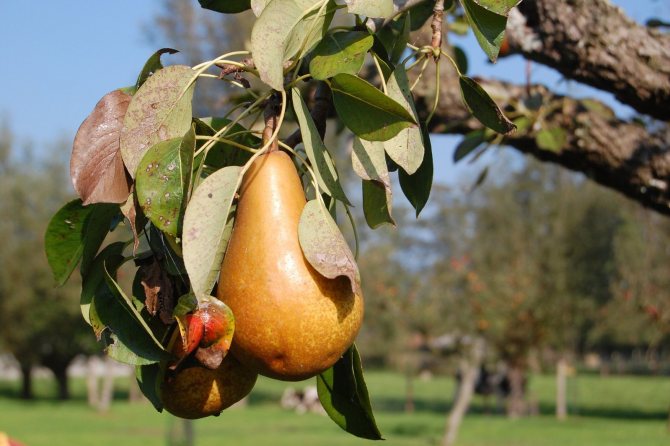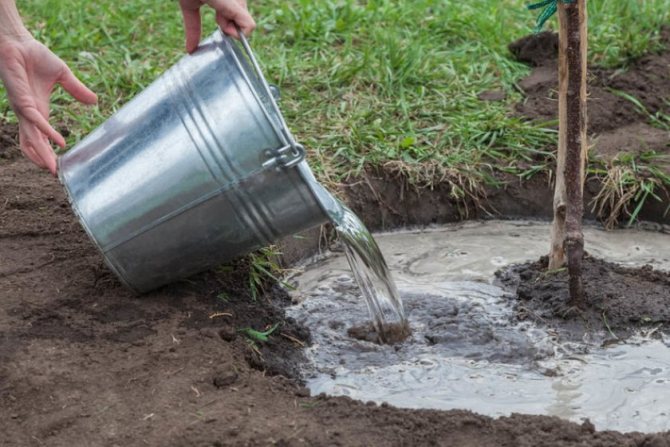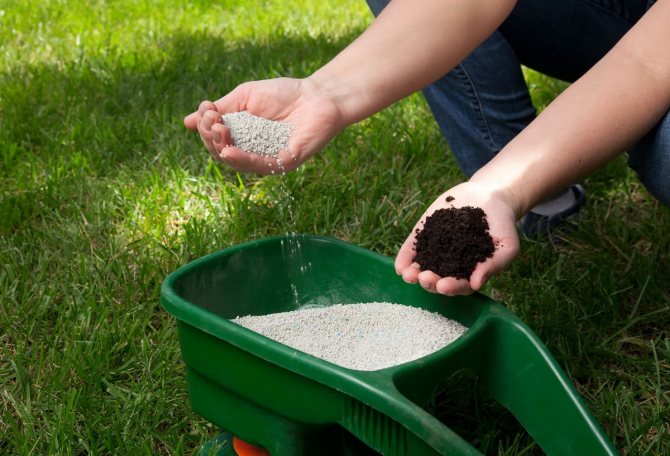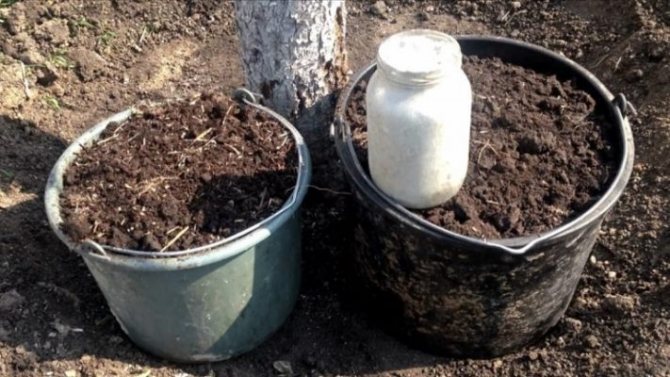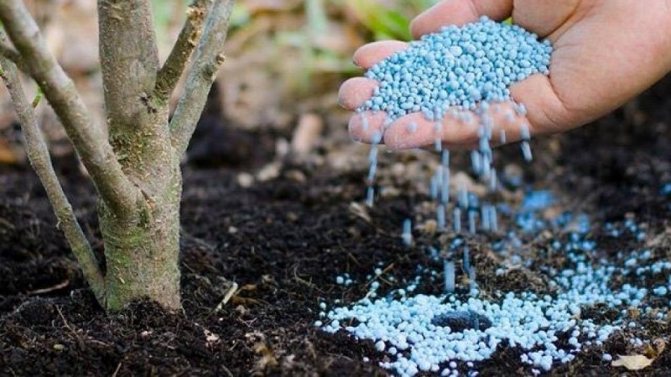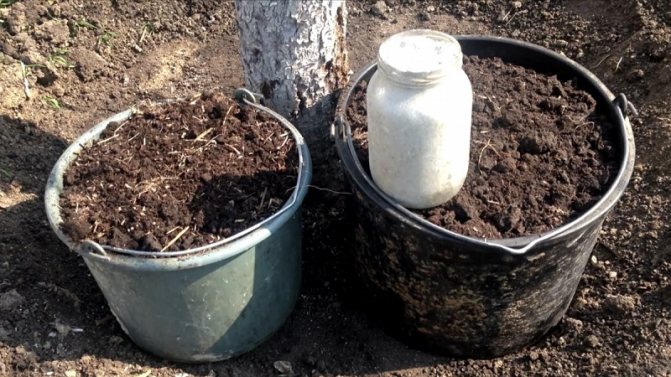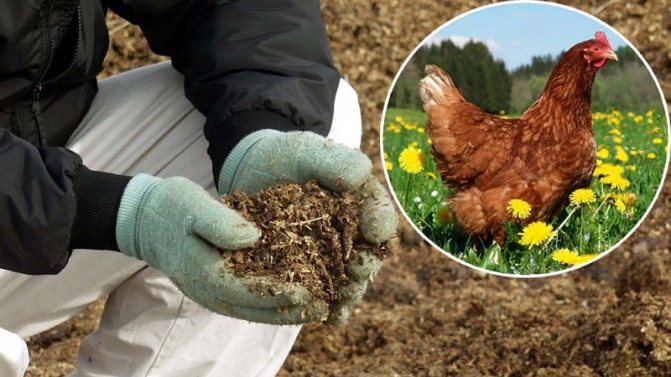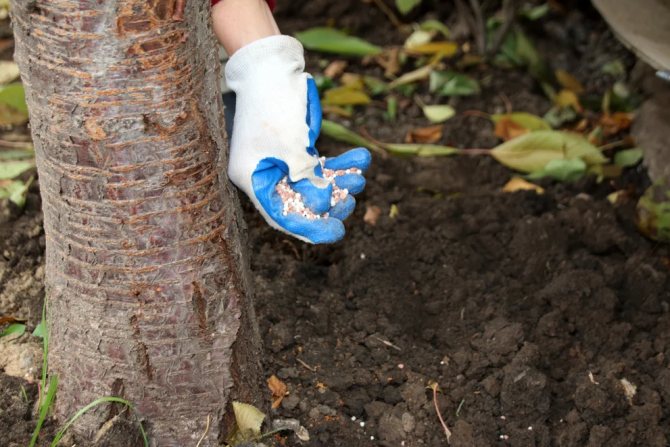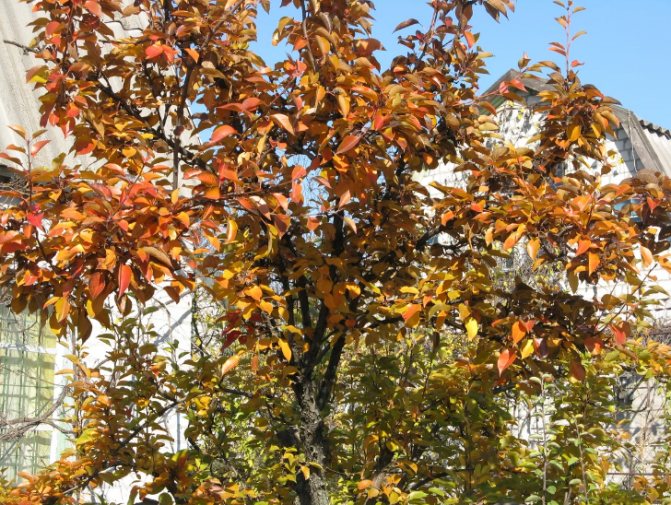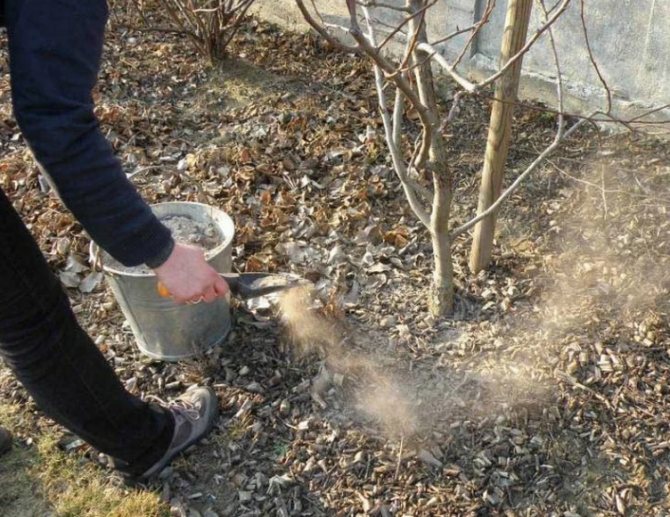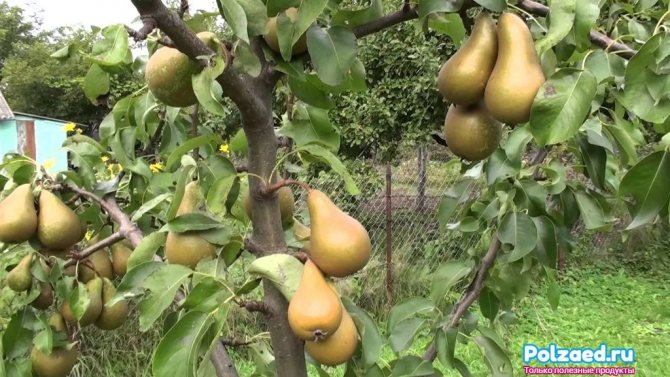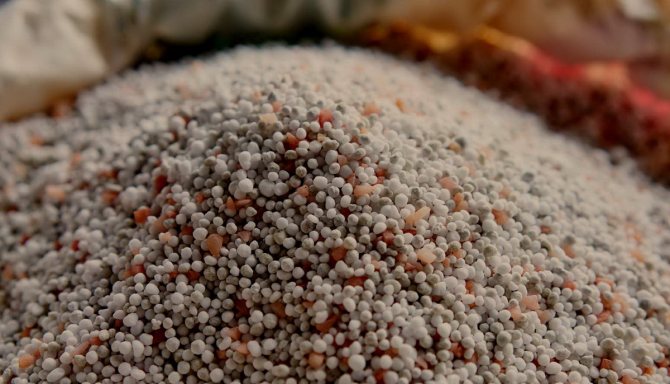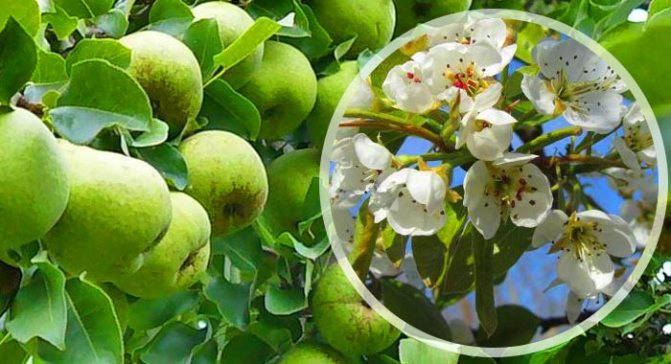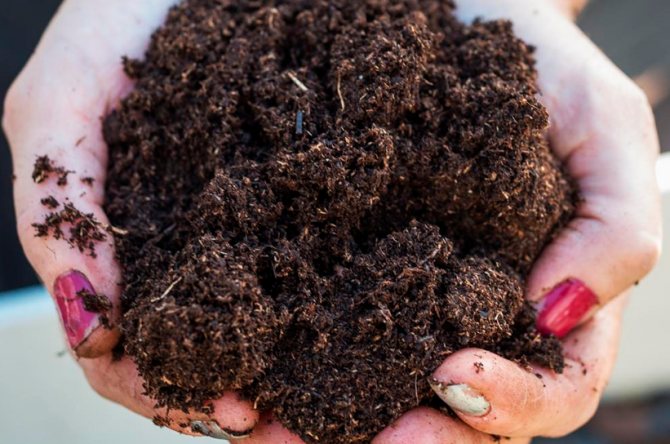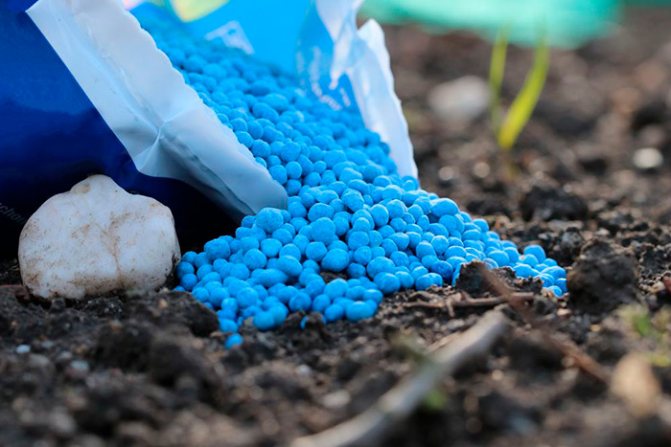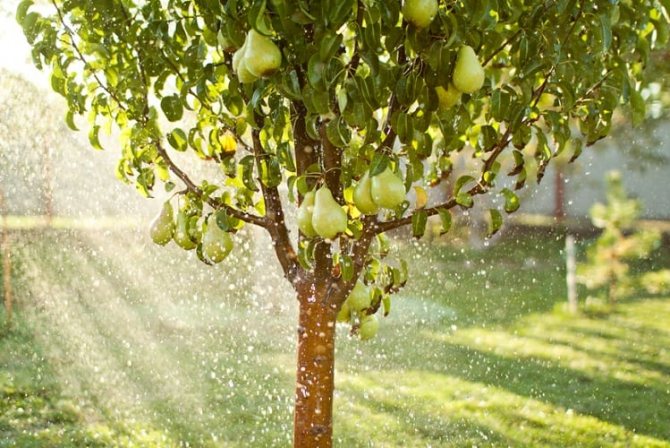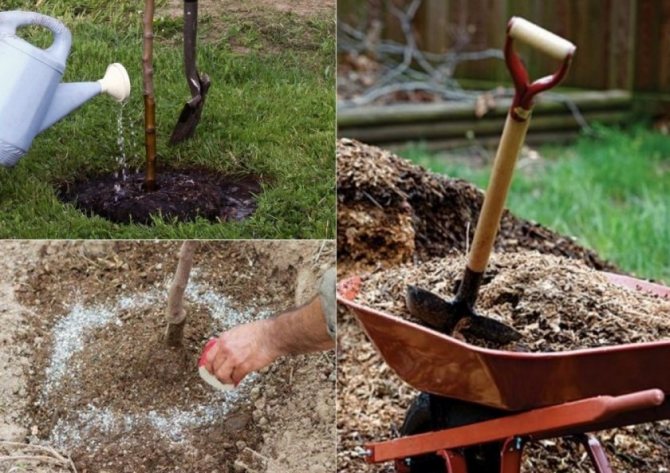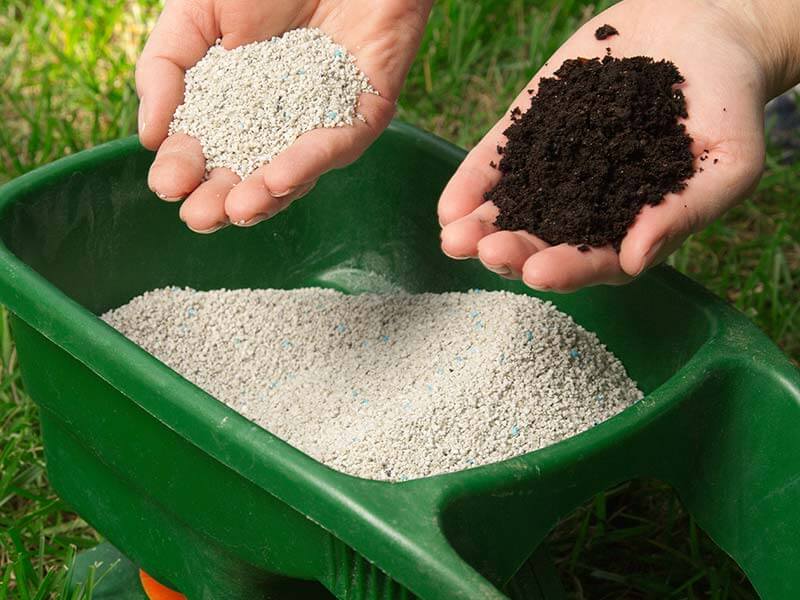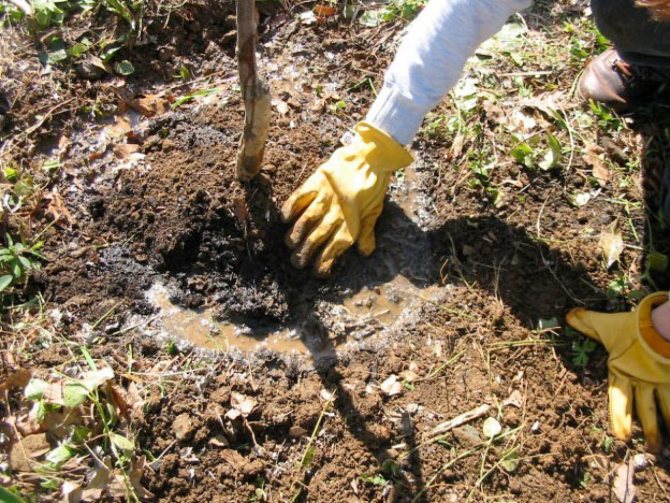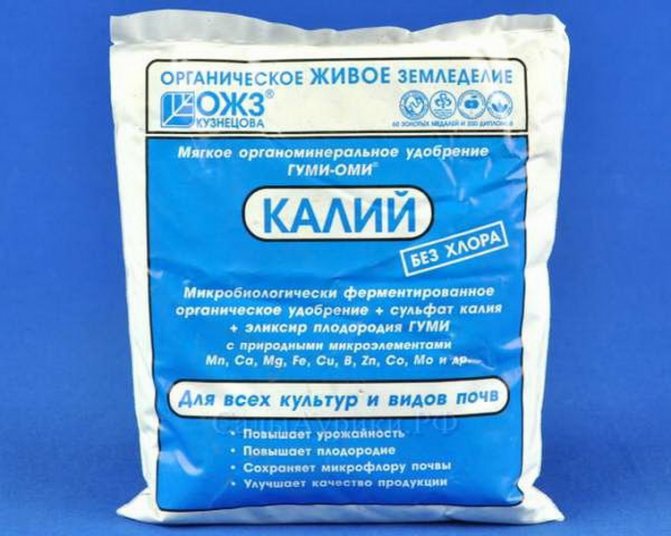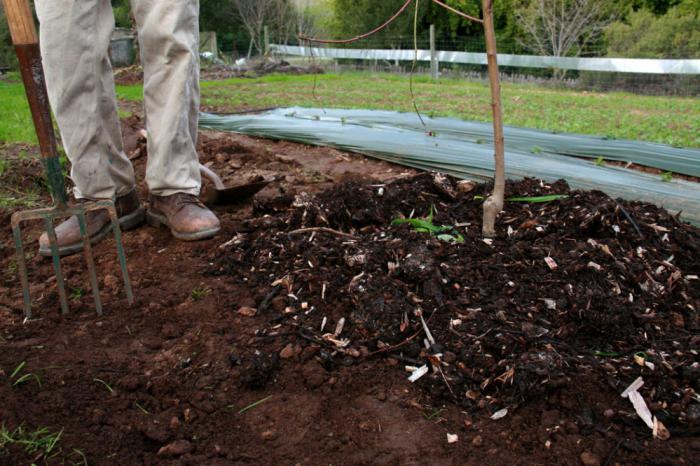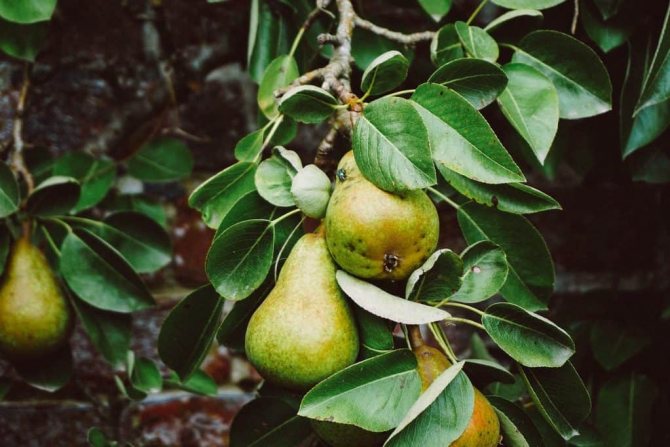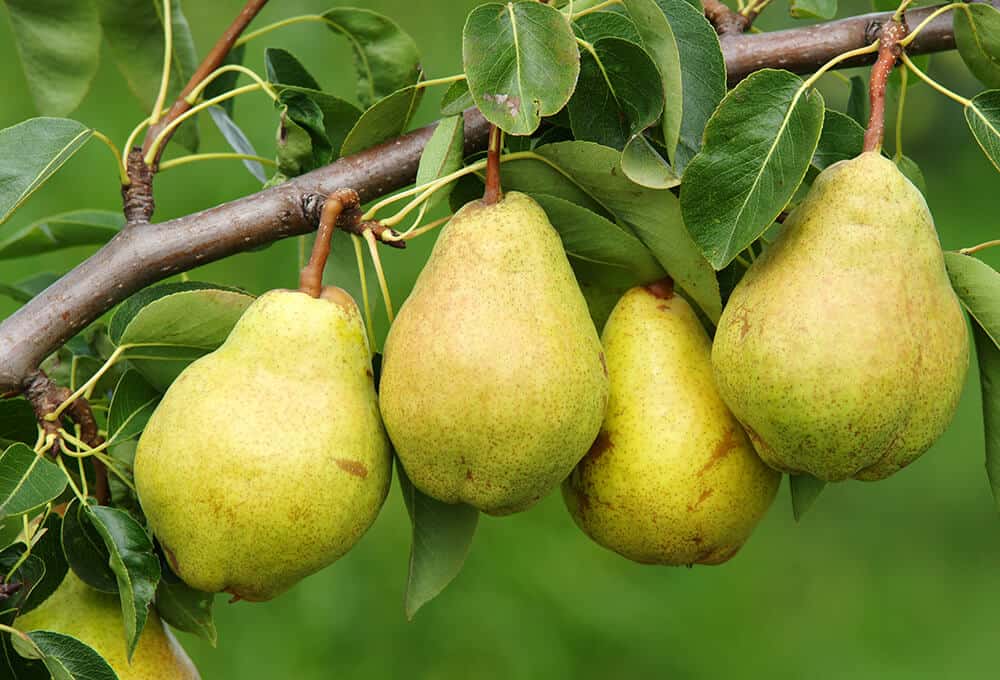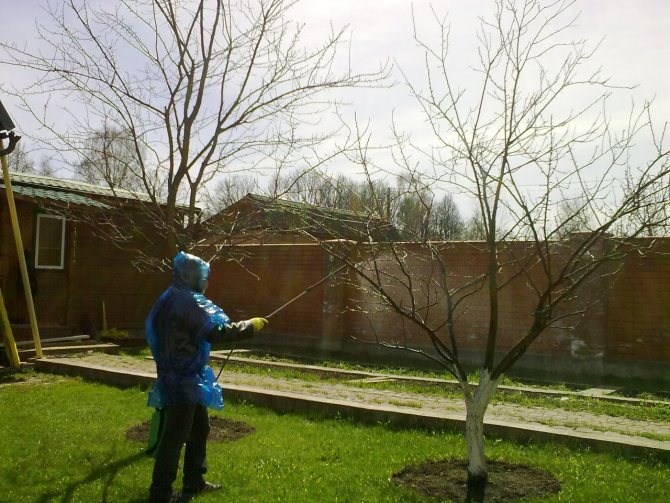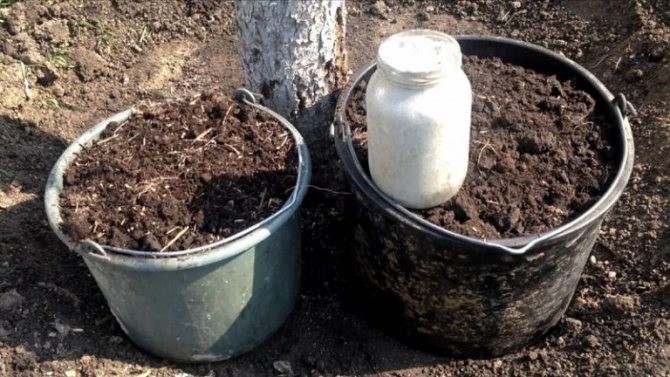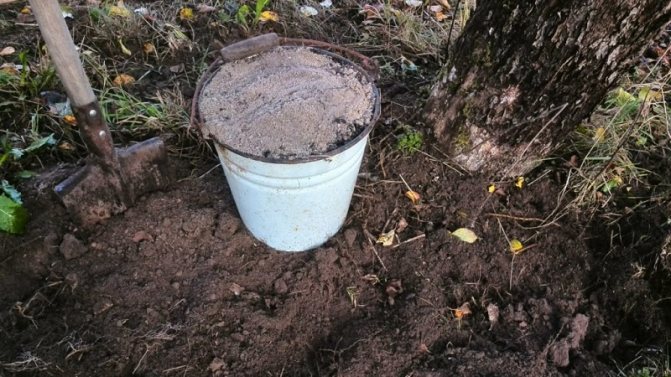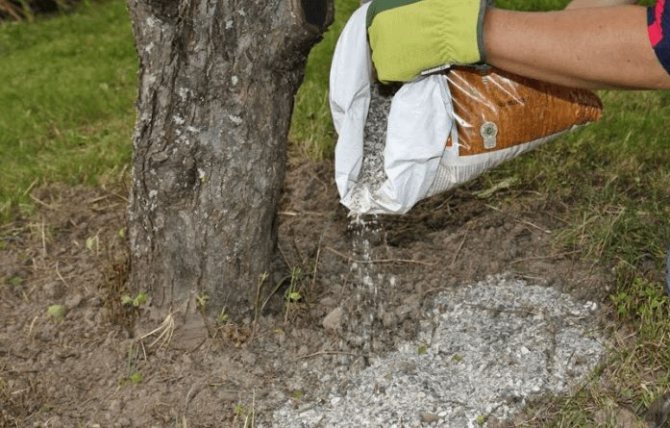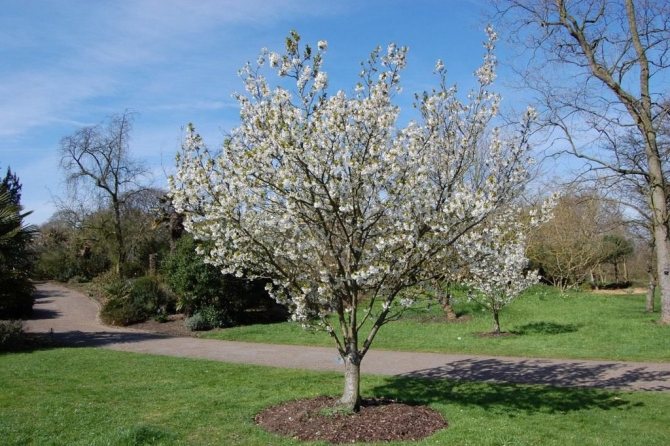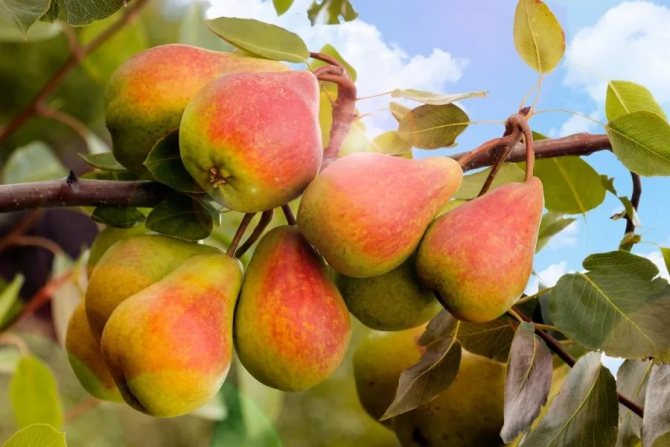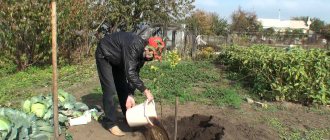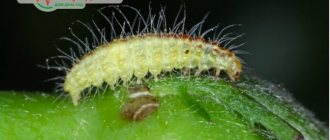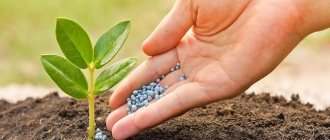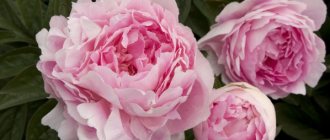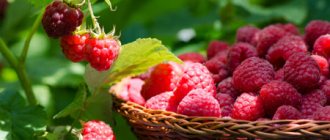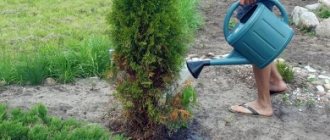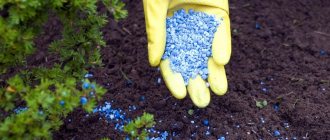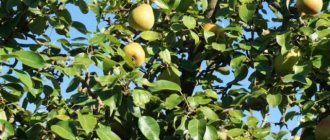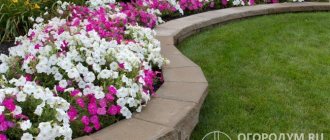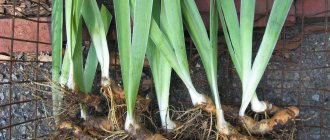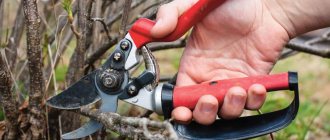How to Determine Nutrient Deficiency in a Pear
If the fruit tree develops poorly, the shoots are sluggish and thin, the flowers crumble before they open up - this is a signal of a plant disease or the absence of a number of nutrients. A change in the saturation of the color of the foliage also signals this:
- yellowness indicates a lack of potassium in the soil;
- redness indicates an imbalance of phosphorus-based compounds;
- blackness suggests: the tree lacks a group of nutrients;
- blanching indicates a lack of nitrogen-phosphorus fertilizers.
Experienced gardening tips
Before fertilizing, you need to read the advice of experienced gardeners:
- Organics can be applied under a tree over 4 years old.
- Nutrients are assimilated within 3-4 weeks, therefore, it is pointless to add fertilizing before the start of frost.
- Before feeding, the pear is prepared: dry, broken branches and foliage around the trunk are removed.
- Clarification of foliage indicates a lack of nitrogen. Therefore, in mid-August, the pear can be fed with nitrogenous fertilizers. The main thing is to observe the dosage, otherwise the plant may winter badly, and in the spring a large amount of foliage will bloom on the tree to the detriment of the harvest.
- If the pear is not fed with phosphorus in the fall, it will not release foliage and will not form fruit.
- If by the end of summer the foliage has curled up, covered with spots, it means that the supply of potassium has dried up. It is this mineral that a pear will especially need in winter. And if the foliage turns pale, and turns purple around the edges, it means that the plant lacks magnesium and you need to use complex mineral fertilizing.
How to fertilize a pear correctly, what to use?
Top dressing of pear trees in autumn is carried out by the root method. Fertilizers are best applied after harvesting the fruits. For the first few years, fertilizers are spread over the surface for this. Then digging is carried out by 15-20 cm. This is a little more than a third of the shovel plate. The closer to the surface the roots are, the closer the trunk is.
Top dressing in the autumn season is carried out by two main groups of fertilizers:
- organic;
- mineral.
In autumn, it is impossible to fertilize with nitrogen fertilizers that stimulate the processes of vegetation of shoots and start the growth of twigs and leaves. Spring is just right for this top dressing.
It is difficult to get a rich harvest without chemicals. Specially developed with the correct dosage, these fertilizers improve metabolic processes in tree cells, have a positive effect on the growth and development, and the formation of fruits.
The main thing to remember is that if you are feeding dwarf or columnar varieties, the dose of drugs must be reduced by 30%. After making the preparations and filling them with soil, a layer of mulch from sawdust, needles or leaf litter from the forest is poured on top. You can plant siderates instead of mulching. For this, winter crops are used. What can you offer pears as an autumn mineral top dressing?
Potash fertilizers
Experienced gardeners recommend making potassium supplements without fail. Without them, the trees will go weak in winter, they will not have enough strength to withstand severe frosts, sudden changes in high and low temperatures.Potash dressing in the fall is a mandatory rule if the garden is located in the northern regions, open to cold winds. What agro shops offer:
- potassium salt;
- potassium sulfate;
- potassium chloride.
Under one tree, 200 g of any of the potash fertilizers are applied. They can be scattered under the pear, placed in the groove. Then dig up or cover with earth on top.
Potassium helps young pears to winter easier and harden well.
Phosphate fertilizers
Without phosphorus, the correct growth and development of pears is impossible, without it the fruits become smaller, the leaves crumble ahead of time. It is necessary for strengthening the roots, laying fruit buds and forming fruits. They practically do not dissolve in water; they do not pass into other soil layers. The autumn period is most favorable for their introduction under pears.
Phosphate fertilizers include:
- superphosphate;
- double superphosphate;
- bone flour;
- phosphorous flour.
An adult pear needs 300 g of superphosphate.
In order for nutrients to reach the roots, and not disappear in different layers of the earth, you need to follow simple tips:
- the preparations are applied no further than the width of the crown along the perimeter of the trunk circle;
- at the same time you can add minerals and organic matter;
- under mature trees, you can make grooves, wells, holes and place useful minerals there;
- from above, all fertilizers are covered with garden soil;
- the end of top dressing should be mulching or sowing with green manure.
To obtain high yields, it is important to give the land what it lacks. If necessary, adjust the acidity of the soil with the help of minerals. Pears don't like acidic environments. Liming is used to solve this problem. To neutralize acid, gardeners use:
- lime;
- a piece of chalk;
- dolomite flour;
- oven ash.
Nutrient mixtures for pears contain salts of the elements necessary for the plant: nitrogen, potassium, phosphorus. As top dressing, preparations are used consisting of one salt, and a complex version - in the form of a mixture of several chemical compounds, taken in certain proportions.
Fertilizers containing this element include:
- ammonium nitrate (NH4NO3);
- ammonium sulfate ((NH4) 2SO4);
- urea (urea (NH2) 2CO);
- calcium nitrate (Ca (NO3) 2);
- sodium nitrate (NaNO3).
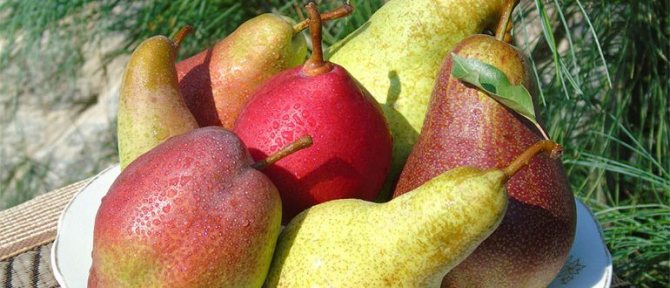
Amide and salts of inorganic acids are white crystals. The first three substances are used for acidification on neutral or calcareous soils. The remaining compounds are used to equalize the pH in clay, swampy and acidic soils.
Phosphorus
Fertilizers containing phosphorus include simple ((Ca (H2PO4) 2 H2O) CaSO4) and double (Ca (H2PO4) 2 H2O) superphosphate. These are hydrated forms of salts of sulfuric and orthophosphoric acids of a crystalline structure, used on any soil.
Potassium nitrate (KNO3) in the form of white crystals is used on sandy substrates.
Raises the pH value to neutral processing of the substrate with slaked lime. The event takes place in the spring. Application rates are selected depending on the type and initial pH level of the soil.
Top dressing applied in spring is very important for the pear. It was during this period that the formation of the main characteristics of the culture, affecting its fruiting in the future, takes place. Spring feeding regulates the following stages of pear tree growth:
- crown development;
- building up new shoots;
- swelling rate of the kidneys;
- budding;
- the formation of ovaries.
Pear nutrition during this period has a direct impact on the quality of the harvest. The first spring feeding is carried out in the third year after planting.
Summer feeding is no less important. It influences the fruit filling and ripening. In the spring, the tree should receive two-thirds of its volume, and in the summer - the remaining third.
Autumn feeding strengthens the defenses of the pear before the winter cold.
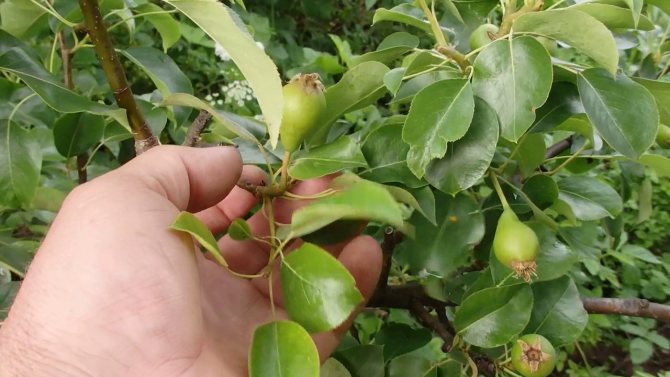

In the spring, the tree wakes up after winter sleep and prepares for the fruiting period. It is necessary to compensate for the deficiency of nutrients, to help the pear regain strength for successful growth and development. There are several types of dressings applied in the spring:
- when planting a tree;
- with poor growth;
- during the flowering period (before, during and after flowering);
- for a good harvest.
The main condition for successful feeding is loose and moist soil. Fertilizing pears in spring, observe the following conditions:
- nitrogen fertilizers are not placed in the planting hole;
- root dressing is applied to the trunk circle, digging it to a depth of 10 cm;
- carefully monitor compliance with the dosage;
- use complex fertilizers.
Fertilizing when planting a pear, or basic soil optimization, is aimed at ensuring that the tree takes root well and begins to bear fruit on time. After the introduction of a complex of mineral and organic fertilizers, the pear will not need repeated feeding for three years.
Fertilizers are applied when preparing the planting pit, some time before the planting date. The work progress is as follows:
- Dig a hole about 70x70x70 cm in size.
- Enrich the bottom layer of soil, for which they put humus (2 - 3 buckets) or compost (6 - 10 buckets).
- The soil extracted from the pit is mixed with phosphorus-potassium dressing (in a 1: 1 ratio).
- If necessary, deacidify the soil with slaked lime (about 400 g per pit).
- The enriched soil is returned to the hole, compacted, watered at the rate of 3 buckets of water per tree, covered with a sheet of plywood on top (to prevent leaching) and left for 2 weeks to dissolve minerals.
Read next: When is the best time to plant grapes: in spring or autumn
After planting the pears, the "Kornevin" rooting agent is used for the early development of the root system. The solution is diluted at the rate of 5 g of the powder of the drug per 5 liters of water and introduced into the near-stem circle.
Insufficient pear growth can be observed for several reasons:
- poor soil condition;
- a small amount of heat and light;
- garden pests;
- insufficient watering;
- fungal and viral infections.
For the fastest stimulation of the growth of shoots and the development of green mass, nitrogenous fertilizers (nitrate or urea) are used: they are most effective. For better assimilation, phosphorus-potassium fertilizers are also added. It is recommended to use complex preparations (azofosku, nitrofosku) with their dilution in accordance with the instructions.
Important! If nitrogenous preparations are applied foliarly, by external processing of the foliage, then this will additionally protect the plant from pests.
In parallel with the application of fertilizers, the soil is carefully loosened to increase air permeability.
The problem of fungal diseases for pears is solved by using a solution of ferrous sulfate.
A very important event in the spring, on which the quality of the crop depends, is the stimulation of the flowering process. It is carried out in three stages: before the beginning, during flowering and after the buds have faded.
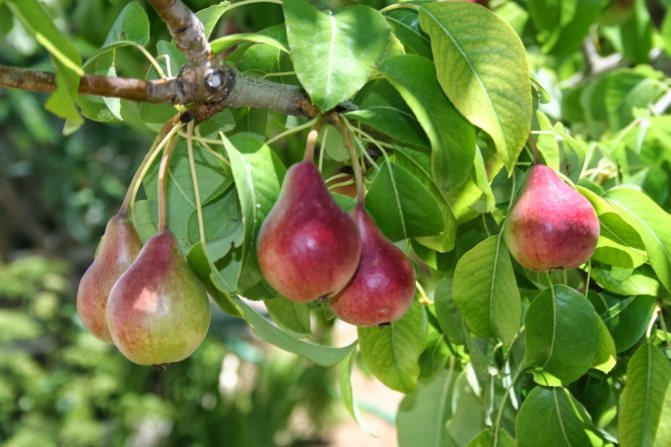

In early spring, after the air warms up to 5 ° C, before the beginning of the flowering period, organic fertilizing is applied, prepared according to one of the following recipes to choose from:
- nitrate solution (2 tbsp. l. dissolve in 10 l of water);
- urea solution (200 g per bucket of water - the norm for 2 trees);
- chicken droppings (200 g insist in 5 liters of water during the day).
During the flowering period, the pear is fed with a liquid solution of urea (half a glass is dissolved in 10 liters of water).
After the end of the flowering period and during the period of fruit setting, fertilize the pear again using one of the complex phosphorus-potassium fertilizers. It can be nitroammophoska (the dry concentrate is dissolved according to the instructions).
Top dressing is introduced by pouring it into special grooves along the perimeter of the trunk circle. The procedure is completed with watering.
A plentiful and healthy harvest is impossible without the competent introduction of minerals. Top dressing should be made in a timely manner, in compliance with all recommendations, and then in the fall the tree will give many large sweet fruits. Correctly and timely carried out activities are the basis of a rich harvest.
It should be said that in the garden it is necessary to provide comprehensive care for the pear, which includes:
- watering them correctly,
- fertilization,
- preventive treatments,
- annual pruning and many other works.
Only in this way, gardeners, by properly caring for the trees on the site, will be able to get an excellent harvest, and will also be relieved of any difficulties in growing trees. With the right planning of such work, even a novice gardener can cope with competent care. You just need to know how to care for a pear.
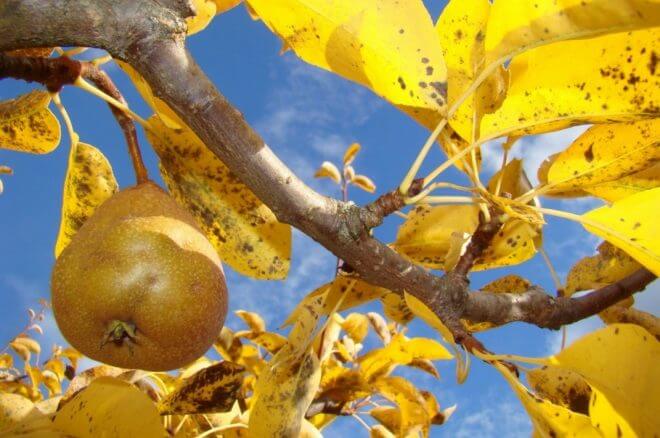

Many gardeners do not know how to properly water a pear in the garden. A pear, planting and caring for which is not difficult, belongs to moisture-loving crops. However, at the same time, it does not tolerate excessive soil moisture.
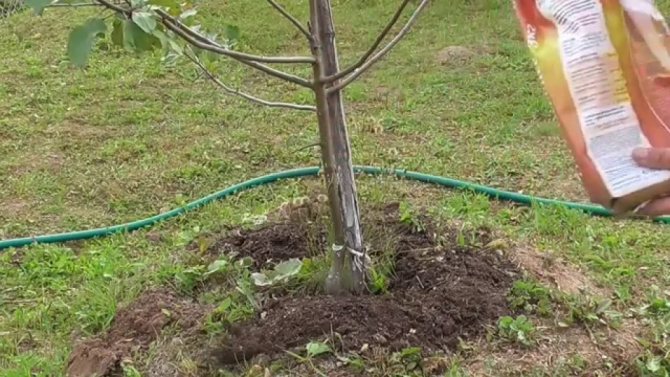

Pear feeding
Care and fertilization at the second stage: leaf fall and rules for feeding pears during this period
After the foliage has fallen, it is time for the second pear feeding. We can say that these are one of the main periods, since the tree needs not only vitamins, but also external decoration (pruning dry branches). The entire list of procedures must be completed by mid-autumn, before the first frost.
The bare crown lends itself best to processing - all the branches necessary for removal are clearly visible. The category of unnecessary branches includes: dry, diseased and broken. After trimming, you need to put things in order under the barrel itself, and then follow the rest of the list of procedures.
In October or November, the base of the pear is whitened with a solution of copper sulfate or lime, and for young seedlings it is recommended to use a chalk emulsion. Protect the trunk from rodents with tight tying.
Fertilizers at the second stage play the role of replenishment with the necessary microelements for the fruit tree and a "blanket" to keep warm for the winter. The most common is considered organic compost, based on peat and rotted manure. This kind of compost is laid out in a layer up to 15 centimeters, and in the spring hour, after the snow melts, it continues to act on the pear with organic substances. Straw and sawdust are also suitable mulch.
Note! Mulching a tree is the last preparation for a pear in the fall.
Organic fertilizers for feeding pears
It is best to use organic fertilizers in the spring, for example, in May. And in the autumn, mineral fertilizers are more suitable.
Benefits:
- Organic fertilizers do not harm plants, trees, humans and do not violate the environment.
- Effective microorganisms contribute to the production of humus. These processes go on continuously, as in nature. The soil acts as a biochemical laboratory. Nutrients are constantly being produced.
- Beneficial microorganisms can be purchased as concentrates. There are also plant-based solutions. They increase soil fertility.
- Organic preparations cannot be overdose.
Disadvantages:
- Enough for a short time and you need to fertilize again.
- The use of effective microorganisms is possible only in warm weather. In the spring, fertilizers are applied when the temperature is stable at least 12 degrees. Top dressing is completed in September.
The frequency of the procedure depends on the fertility of the soil. Poor soil is fertilized once a week, rich soil once every three weeks.
To normalize the balance of nutrients and increase the yield of pears, various fertilizers are used.They can be used in complex form, periodically changing the type, or directed, using one group of compounds of an organic or mineral nature. The main thing is to restore the correct ratio of components in the soil so that the plant receives all the necessary substances with feeding.
One of the most popular and affordable fertilizers. For top dressing, cow, horse, pig manure is used, which contains elements important for the pear: potassium, nitrogen, calcium and phosphorus.
Fertilizer is used in:
- fresh;
- rotted state (was in the air for 3-6 months, partially dried out and decomposed).
Manure is introduced by digging or watering the soil.
Humus
Completely rotted and decomposed manure, representing a homogeneous bulk mass. The optimal quantitative composition of the required elements explains the greatest popularity of the fertilizer. Top dressing is applied to the soil and trunks when digging or loosening.
Bird droppings
Chicken excrement is also a good organic fertilizer. A high concentration of nitrogen, phosphorus, potassium assumes the use of the waste product of birds in a dissolved form.
Wood ash
Powdered top dressing, formed during the complete combustion of biological objects (trees, sunflowers, buckwheat, etc.). It is rich in potassium, phosphorus; contains zinc, sulfur, calcium, iron. The most useful product is obtained from birch. Fertilizer is used in the form of an aqueous solution and powder: it is applied to the soil, used for sprinkling, spraying and watering.
Bone flour
A product of processing bones of domestic animals, characterized by a high content of phosphorus. Refers to a slow-acting fertilizer-top dressing. Contains a fat (lipid) fraction, calcium and nitrogen compounds. It is actively used for watering.
Top dressing schedule
Any fruit tree, including a pear, needs to get the right amount of nutrients on time. Otherwise, you can forget about a good harvest and tasty fruits.
- The first time you need to feed the pear immediately after hibernation... Fertilizers need nitrogen, and it is important to water the plant well.
- Then it is worth fertilizing the pear as soon as it appears first flowers... Fertilizers should be nitrogenous.
- Mineral fertilizers are used in autumn, when the harvest was harvested and the leaves began to fall off little by little.
When there is a drought on the street, it is recommended to use foliar application nutrients. Since in the usual way, trace elements are unlikely to reach the root system. In this case, exclusively organic substances are used by spraying the crowns after sunset.
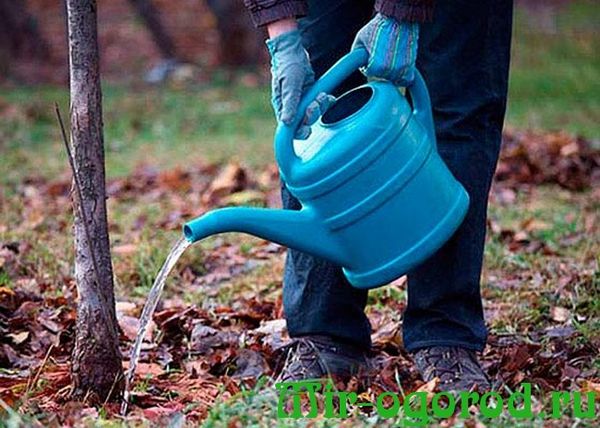

It is prohibited to apply fertilizers without preliminary abundant watering.
Organic
This type of fertilizer was created by nature itself. It has always existed. From the moment of the inception of life processes on the planet until today. Organic feeding is one of the safest and most reliable. It allows you to grow environmentally friendly and healthy pears. To increase the fertility of the soil under the pear, manure, bird droppings, compost are used.
Humus
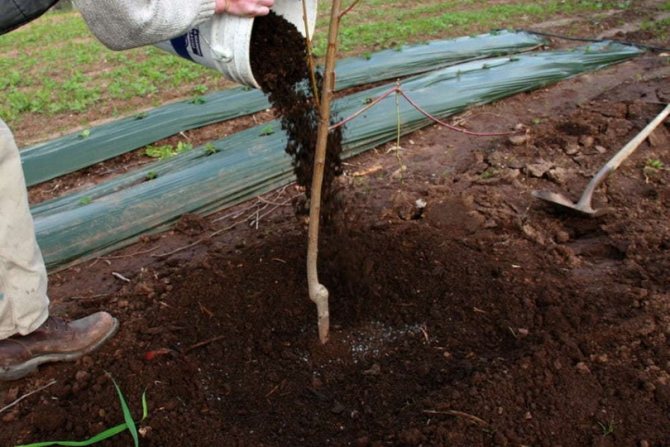

It is better to use rotted manure. Fresh can burn the roots if accidentally hit. 1 bucket is applied to 1 m2 of land. It is laid out on the surface of the soil under the crown. If necessary, add a phosphorus-potassium agent and dig up everything together. The dose of rotted manure depends on the age of the tree:
- up to 7 years, 30 kg of humus is introduced;
- over 8 years -50 kg.
The frequency of feeding with manure depends on the fertility of the garden soil. If the soil is black earth, rich in worms and soil bacteria, cow fertilizer is applied every three years. On scarce depleted land, this procedure is best done every two years.
Bird droppings
Delicious treat for pear trees. In autumn, it is applied to the soil in a dry form.It is dug up, mixing evenly with the ground. Top can be sprinkled with a layer of garden soil. The dose of droppings per plant is the same as for manure.
Wood ash is an irreplaceable storehouse of potassium. Its content in it is 10%. The potassium level depends on what the ash is obtained from:
- when burning sunflower waste - potassium is 36%;
- from potato tops -20%;
- ash of birch branches and bark - 14%.
Read more: Worms in chickens, symptoms and signs of treatment
In addition to this element, ash also contains phosphorus, calcium, magnesium, molybdenum. It contains almost all mineral elements. Only nitrogen is missing. It is obtained after burning garden and vegetable garden waste. These are cut branches, weeds, diseased leaves that cannot be mulched. Therefore, its composition and value depend on the material burned. It is applied under a pear along with humus or compost.
Compost
Cheap and at the same time one of the best fertilizers for all vegetation. Anyone who has adapted to doing it on their own does not accept any other means for feeding anymore. You can put anything in the compost - vegetable scraps, rotting fruits, weeds, trimmings, grass cuttings.
Some observations of the state of the fruit tree and the necessary actions in relation to it
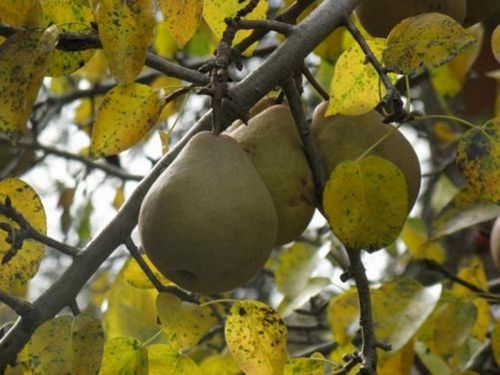

The study of the detailing of the soil and pears makes it possible to correctly apply feeding in the fall. Some of them are offered to your attention:
- Watering. To understand if a pear needs watering in the fall, you need to examine the soil for moisture content. To do this, the soil is dug, about 20 centimeters deep, raked in with one hand, and then a lump is made. If the lump has formed well, then watering is not needed, if it crumbles, then the plant needs water.
- Dull leaves speak of a lack of nitrogen in the earth. Important! Exactly observe the proportions for the introduction of nitrogen substances, otherwise by the next season the pear will grow abundant greenery, and fruiting will be scarce or completely absent.
- In August, if the foliage began to become covered with brown spots, curl at the edges or wrinkle, then this indicates that the fruit tree needs potassium.
- Magnesium deficiency is indicated by pale, red or purple leaves around the perimeter.
Mineral fertilizers
Phosphate fertilizers
Pear feeding
Benefits:
- Ease of use;
- Instant action.
Disadvantages:
- Fertilizers have a good effect on the ripening of pears, but evaporate quickly, it is necessary to periodically add top dressing;
- An overdose of drugs is possible, leading to the death of a tree or plant;
- Ready mixes are used only in a certain season;
- Cannot be fertilized in the heat;
- Before fertilizing, check the weather forecast. For example, rain washes away some of the nutrients.
What a pear needs in autumn
Autumn feeding enriches the plant with micro and macro elements, the stocks of which were actively consumed during the growing season. How the pear will endure the cold directly depends on this.
If the tree is not prepared, lacks mineral or organic substances, it may not withstand low temperatures.
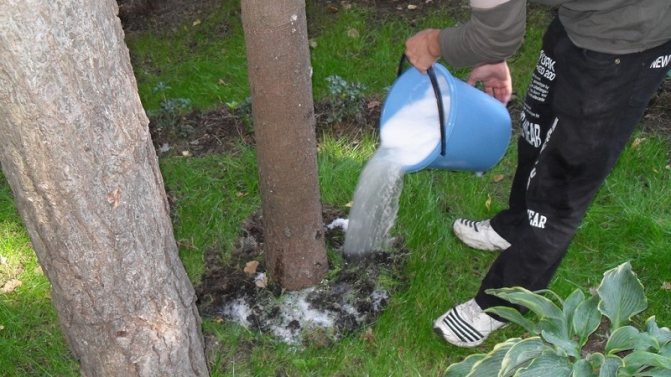

Top dressing after planting
When planting a pear, fertilizers should be applied to improve the survival rate of the seedling and its further full development. Previously, soil is removed from the planting pit 1 m deep and 0.6 m wide, and only then the nutrient mixture is poured, which can be made on the basis of:
- humus (2 buckets);
- superphosphate (2 cups);
- potassium salt (2 tablespoons).
Mineral dressing mixes with the soil, sheds well and is left for 10-14 days. Only after the soil is enriched with the necessary elements, the seedling is planted.
A simple, but laborious event will help the young pear to take root well and start bearing fruit sooner. And the gardener will be exempted from feeding the tree for the next 3 years.
It is recommended to make a landing pit before planting. When planned placement in the spring, it is prepared in the fall. If the summer resident wants to plant a pear in the fall, the pit needs to be prepared in the spring. How to proceed:
- Dig a hole 70 x 70 x 70 cm in size.Place mature compost or humus on the bottom with a layer of 10-15 cm.
- Mix the removed soil with phosphorus, potassium (1: 1), manganese, calcium. Fill the pit with this mixture.
- Level and compact the soil. Put a sheet of plywood or linoleum on top (to prevent soil erosion).
Before planting, dig a hole of such a size that the root system of the pear fits. Then a peg for tying is dug in and the seedlings are lowered into it. The soil around is compacted, a groove is formed for water flow and the plantings are watered.
The most important point of care is watering the pear. This procedure must be carried out throughout the season. The water regime is selected depending on the type of plant. However, it also depends on the weather conditions specific to a particular region. For example, if a variety does not tolerate drought, then watering in hot weather is performed as the soil dries out.
The first watering is done in the spring, when the tree wakes up from its winter sleep. At this time, watering is performed 2-3 times. Simultaneously with watering, top dressing is applied. Thanks to it, plant growth is stimulated, as well as the swelling of the buds is accelerated and flowering begins earlier.
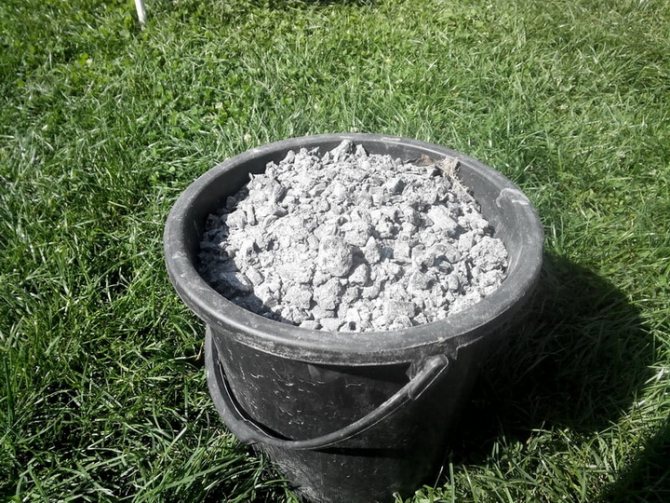

In summer, the pear should also be watered 2-3 times. The first watering takes place in early June. The second time water is applied in mid-July (a few weeks before the start of fruit ripening). This rule is typical for summer varieties. If the summer is dry and scanty for precipitation, the third irrigation is carried out in mid-August.
In the summer, pears are also fed. Here it is necessary to use fertilizers that contain potassium and phosphorus. With their help, the plant will gain strength after flowering to start pouring the fruits. Top dressing is usually done in July.
In autumn, as well as in summer, you need to use fertilizers rich in phosphorus and potassium. However, watering and feeding is not all the care that pears need. Pruning must be performed throughout the year.
Pruning
The pear should be pruned in spring, summer and autumn. In the spring, branches are pruned that are damaged or frozen in winter. Shoots growing crooked are also cut off.
A couple of fruit branches must be left on the skeletal branches. To prevent the penetration of parasites and microbes into the wood, the cut is processed with garden pitch.
Cut branches need to be burned, as insects can hide in them.
In summer, you should not take care of the tree in this way. During this time, any trauma will be negative. Only in the case of strong thickening is it allowed to cut off excess branches.
At this time, all dry and injured, as well as diseased shoots are removed from the tree.
Annual branches are also shortened. They are cut by 1/3. All plant debris after completion of this operation should be burned. Gardening tools used for cutting stems must always be clean. Otherwise, they can infect plants with pathogenic microflora.
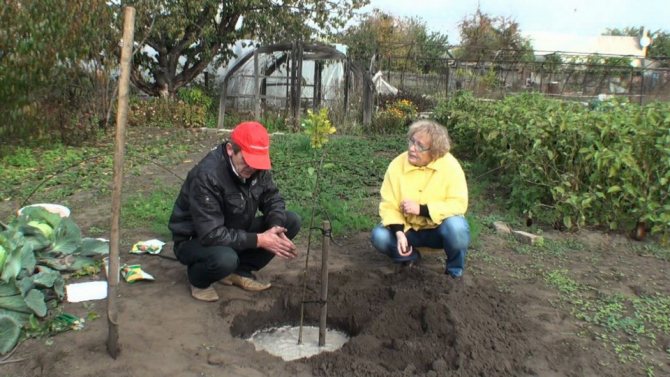

Caring for a pear involves the implementation of certain agrotechnical techniques with a near-stem circle.
Caring for the near-barrel circle consists in performing the following actions:
- periodic weeding;
- loosening the earth. This procedure allows the root system to receive the required amount of oxygen;
- water introduction;
- mulching. Prevents the development of weeds and reduces the rate of evaporation of moisture after watering.
The above steps should be done throughout the season. In the fall, when preparing the garden for winter, the trunk circle is mulched. Thanks to this procedure, you can protect the root system from freezing.
In order for the pear to remain healthy, you must adhere to the following recommendations:
- in the spring, immediately after all the snow has melted, the trunk circle and the plant should be sprayed with special solutions (for example, a 1% solution of Bordeaux liquid). You need to spray the tree three times: at the beginning of March, before the beginning of April and after flowering in May;
- spraying is not performed in summer. But at this time only the removal of damaged and infected branches is allowed;
- in the fall, the garden is being prepared for winter. At this time, the tree trunk must be whitewashed. Thus, you can protect plants from harmful insects, pathogenic microflora and rodents.
Correctly carried out prevention is reliable protection of your garden from diseases and pests.
The above has described how to care for a pear in spring, summer and winter. Now you need to figure out how seedlings and young trees are grown. First, you should decide where the purchased seedling will be planted. Here you need to choose the optimal place for the plant, depending on its varietal characteristics.
Otherwise, the plant will take root for a long time in a new place. When forming planting holes, it is important to maintain the distance between the seedlings so that as they grow, the trees do not interfere with each other. Next, the seedling is prepared for planting. After planting, it is recommended to tie the tree to a support. Otherwise, strong winds may break it.
Read more: How to feed cucumbers on the windowsill
Immediately after watering, the seedling should be watered well. In the first year after planting, it is important to regularly water the plant, weed and mulch the soil. Top dressing is carried out depending on the variety. Usually, fertilizers that are placed on the bottom of the planting pit are enough for the first few years.
We have figured out how to care for pear seedlings. Now it remains to figure out what kind of care is needed for old trees. The care itself will not differ much from adult plants.
To improve the fruiting of such trees, rejuvenating pruning is imperative. Its purpose is to stimulate the pear to produce fruit. Whole branches will have to be cut here.
Also, such trees should be watered and fed more often. With proper care, old plants will begin to yield more abundant and tasty harvests. Knowing how pears are grown, you can easily cultivate this fruit crop in your garden plot.
In this video, you will hear useful tips for caring for a pear.
How to fertilize a pear tree before winter
There are a wide variety of fertilizers that can be used to feed the pear. But when, how and in what quantity to use certain complexes, how to fertilize them, we will talk later in our article.
Organic fertilizers
You can use organic matter to feed the pear, but it is best to do it in spring time... Practice shows that organics give the best effect at this particular time. Whereas in the fall you should pay attention to the mineral complexes.
Mineral
Correct autumn top dressing is the use of mineral fertilizers. You can buy them at any specialty store, or you can create them yourself. Let's consider one option in more detail below.
For mineral feeding, it is necessary to dissolve one tablespoon in ten liters of water. potassium chloride and two tablespoons superphosphate... It is recommended to apply the solution not under the barrel, but in the pre-barrel circle.
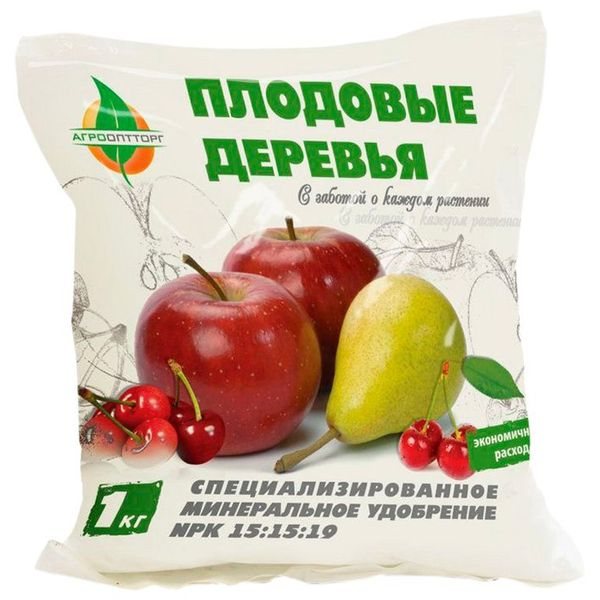

Complex feeding for pears
Pear staple spring food
For established and fruiting adult pear trees, feeding begins in spring, after the snow melts. How to fertilize in spring depends on the stage of development of the tree.
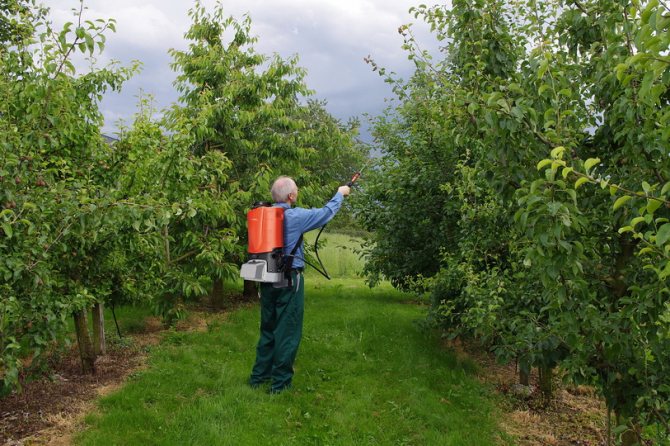

A pear during the period of awakening and sap flow should receive the required amount of nitrogen.If the soil is waterlogged, spring top dressing is applied in granular form to a depth of about 10 cm.If the soil is dry, one of the proposed solutions is used (in terms of a bucket of water):
- 2 tablespoons of saltpeter;
- 500 g of chicken manure (the solution is infused for about a day);
- 50 g of urea.
The next stage of feeding is the application of fertilizers before flowering to quickly set a large number of fruits. It is advisable to feed the pear in the spring before flowering (and it blooms in May) with a complex fertilizer - nitroammophos, containing salts of potassium, phosphorus and nitrogen in a balanced form. One medium-sized tree should be fed with 30 liters of water, which contains 100 g of the mixture.
When the fruits are set, it is important to preserve and get a good harvest. Fertilizing the pear in the spring after the end of flowering is recommended in the area of the near-stem circles with a solution of nitroammofoska at the rate of 50 g of fertilizer per 10 liters of water.
For good nutrition, the pear needs two groups of fertilizers: organic and mineral.
In the fall, after harvesting, the tree requires replenishment of nutrients. Fertilizers should be composed of phosphorus, potassium and nitrogen. But phosphorus and potassium make up 1 part, and nitrogen - ¼ part by weight.
All components are mixed in dry form and scattered around the perimeter of the trunk circle. Moreover, the main amount should be located along the circumference, which is the projection of the crown onto the ground. After that, the soil is loosened to a depth of 7-10 cm.
Does the yield of the tree depend on the fertilizing introduced in the fall?
The yield of a pear fully depends on its condition, the creation of optimal growth conditions and, of course, on the availability of the required amount of micronutrients necessary for fruiting. To get a good harvest, it is recommended to properly fertilize the plant in the fall.
Top dressing is performed in the area of the pre-trunk circle... These manipulations should be started after complete collection of the fruits, when a third of the foliage has already turned yellow.
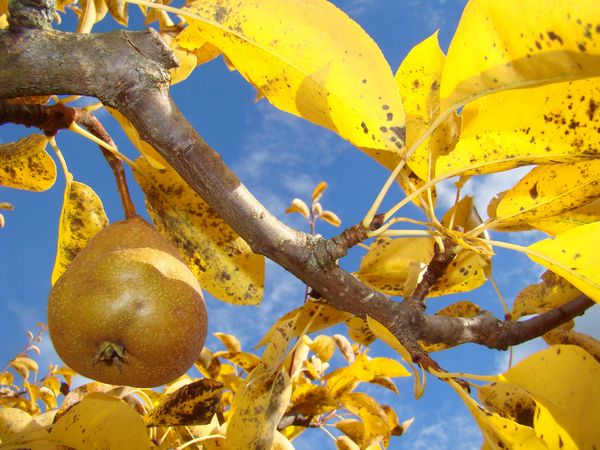

Top dressing is performed in the area of the pre-trunk circle when a third of the foliage has already turned yellow
You can already feed the tree in the second year growth. You don't need to do this earlier. But this is only on condition that the right amount of fertilizer was introduced into the hole during planting. Such a complex of nutrients is just enough for a couple of years. Well, and then you need to feed the pear.
Autumn feeding of trees, water-charging irrigation before winter
Competent preparation of the garden for winter will have a positive effect on winter hardiness. The trees begin to feed in August-September. Mineral and organic fertilizers are applied to the near-stem zone, and the crown is sprayed after the leaves fall.
Fertilization is especially important for seedlings and young trees in the fall that have not reached 8 years of age. From light soils (sandy, sandy loam) useful elements are washed out faster than from heavier soils (clay, loamy). This fact is taken into account when calculating the amount when applying top dressing and fertilizers.
Fertilizing with deep digging of the soil around the tree trunk in October will not only allow the roots to breathe, but also destroy the wintering of the caterpillars.
During digging, the main organic fertilizer is introduced into the zone of the near-stem circle - humus (30-50 kg) simultaneously with potassium, magnesium, phosphorus and iron.
- superphosphate - 300 g;
- potassium sulfate - 200 g;
- Magnesium - 300 g.
After deep embedding in the near-stem circle, the plant should be watered abundantly. Pome crops require saturated nutrient solutions. Apple trees and pears have a deeper root system and remove large amounts of nutrients from the soil every year.
- superphosphate - 3 tbsp. l.
- potassium sulfate - 2 tbsp. l.
- water - 10 liters (bucket).
Consumption: 4 buckets of this solution per adult tree or 2 buckets per seedling.
Nitrogen is a spring fertilizer that enhances sap flow, which will be out of place during the winter sleep of a tree.Limit, in accordance with accepted standards, in the autumn period feeding with substances: manganese, cobalt, copper, boron.
In a dry and warm period of leaf fall in mid-October, abundant watering of garden trees is carried out along a large crown circle and a small near-stem circle. Pre-winter water-charging irrigation will preserve the root system of the tree in severe frosts, exclude the possibility of sunburn of branches and bark.
Young roots most vulnerable to cold weather are located under the crown, rather far from the plant's trunk. Watering an adult tree for 2-3 days requires up to 20 buckets of water, for a young tree 4–6 buckets are enough. Watering abundantly, it is necessary to take into account the type of soil, the depth of the root system and groundwater. An average tree produces water in winter from a depth of 0.5–2 m.
In addition to fertilizing, it is also important to treat the garden from diseases and pests in the fall.
In the fall, after harvesting, the tree prepares to enter a dormant state. The pear's strength is depleted, it needs a supply of nutrients for wintering and preparing for spring. The root system grows and develops in winter, that is, pear feeding in the fall is necessary. For this purpose, it is recommended to use a composition of:
- 0.5 kg of wood ash;
- ammophoska (3 tablespoons);
- K2SO4, KCl, urea - 1 tbsp of each salt;
- superphosphate - 2 tbsp. spoons.
The top dressing components should be mixed and added to the trunk circles when digging.
Features of fertilizing in the fall
In order for the pear to move normally after hibernation, it is recommended to master all the intricacies of autumn feeding. After all, the lack of useful microelements is as dangerous as their excess. You need to know the "golden mean". If the tree lacks food, it will be difficult to recover after winter, and if there is a lot, it will wake up early. What if spring frosts? This is also not good.
It is worth performing the primary autumn fertilization in September, immediately after harvest. In this case, it is better to use potassium and phosphorus-containing fertilizers. The procedure will allow the wood to develop properly and provide buds for the winter.
The later you feed the plant, the less time it has to prepare for wintering.
As soon as all the foliage has fallen and you have pruned the old branches, you can proceed to the second stage of autumn feeding. Here you can use fertilizers with boric acid, potassium, phosphorus, zinc, magnesium and copper. The main thing, so that there is no nitrogen - this will prevent the tree from falling asleep normally before wintering.
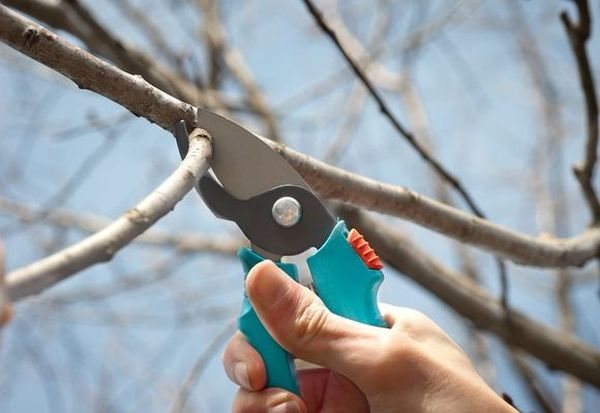

The second feeding of the pear is performed after pruning.
Another important point: it is necessary water abundantly tree before winter. To do this, you need two buckets of water for each pear.
Proper watering and spraying
Careless application of nutrient formulations will harm fruit trees rather than help. Fertilizer consumption depends on several factors:
- the age of the tree;
- soil fertility;
- season of the year.
There are rules that determine the time and dosage of fertilization:
- seedlings begin to feed from the second year of life;
- organic fertilizing is applied every third year;
- mineral fertilizers are used annually;
- for seedlings, potassium-phosphorus (nitroammofoska) fertilizers are poured in a mixture with soil, and organic fertilizers are placed on top.
For moisture to penetrate to the roots, you need to arrange proper watering. For this, a special structure is made from wells. It is necessary to drive pipes into the ground around the tree to a depth of 30-40 cm, into which liquid fertilizers or water are poured. The ends of the pipes must remain above the ground. However, with this method of irrigation, it is necessary to monitor the cleanliness of the cavity of the pipes so that they are not clogged with debris.
The pear needs to be watered even in the fall after harvesting the fruits, until the onset of frost.
Watering can also be done by digging a trench around the trunk. They dig a shallow trench into which liquid is gradually poured.When all the water is absorbed, the trench is covered with earth. An adult tree can take up to 10 buckets of water; for small pears, half the volume is enough.
Gardeners also use spraying of branches if the tree needs additional feeding.
Which fertilizing should be used - dry or liquid? Gardeners advise in dry weather to fertilize trees with liquid top dressing, and in rainy weather - to bury dry substrates to a depth of 10 cm.
Fertilizer value for pear
Each trace element contributes to the development of the fruit tree, but in a special direction. Nitrogen is necessary to build up green mass; without it, the pear will not be able to grow. Leaves with a nitrogen deficiency will become pale, quickly turn yellow and begin to fall off.
Potassium is responsible for taste. If it is not enough, the fruits will be tasteless and small, and the leaves will curl into a tube.
Phosphorus is responsible for the development of the root system, it is especially important for young seedlings. Adult plants with a lack of phosphorus suffer from unnatural leaf color and crushing of fruits.
With a lack of iron, the pear will fall ill with chlorosis. A lack of magnesium will cause leaf blight and early drying.
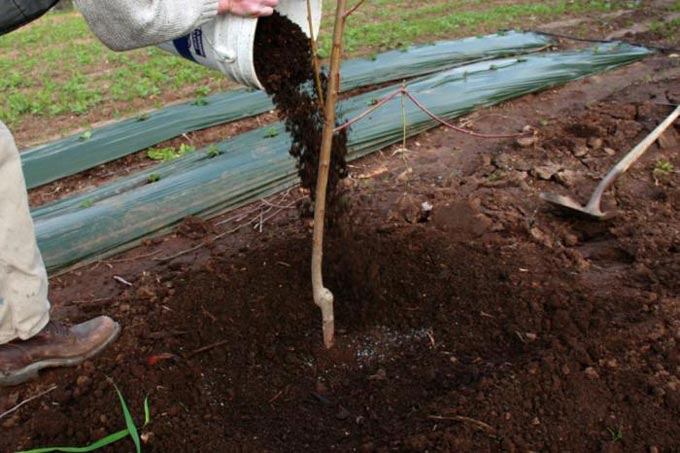

Summer care
In the summer, the pear does not need additional nutrition, however, gardeners spray the leaves with nitrogenous substances around mid-July. This method is necessary during dry summers when the roots cannot draw nutrients from the ground. Spraying is the fastest transport of trace elements to the tree.
We recommend to read: Potassium monophosphate refers to potassium-phosphorus agrochemicals used for gardening and feeding indoor plants.
Also in the summer, it is good to feed the pear with potash and phosphorus agrochemicals. If you notice signs of illness on branches or leaves, immediately treat the tree with appropriate preparations.
Pear care tips: considering the nature of spring
During the flowering period of the buds, it is advisable to use the same substances as for the first dressings, but tinctures that have stood for 10-12 hours should not be used.
Watering is carried out according to the same scheme - processing of grooves.
In the spring, you need to apply only 2/3 of the fertilizer from the norm prescribed on the packages of chemicals.
Ammonium sulfate in the role of the main fertilizer is considered one of the active and active substances for starting the vegetative mechanism. Solution: 40 grams of substance per 5 liters of water.
Ammonium sulfate in the garden.
It can be used with nitrogen-containing products in a ratio of 1: 3: 5 l of water and 15 g of dry matter.
In a rainy spring, it is better to apply granular or dry dressings by digging up the soil.
In cold spring, it is better to spray trees with different accents.
In extreme cold, the fruit crop receives much more nutrients through the leaves than through the root system.
In July, you need to inspect the trees well before harvesting, which occurs in the months of August and September.
Common feeding mistakes
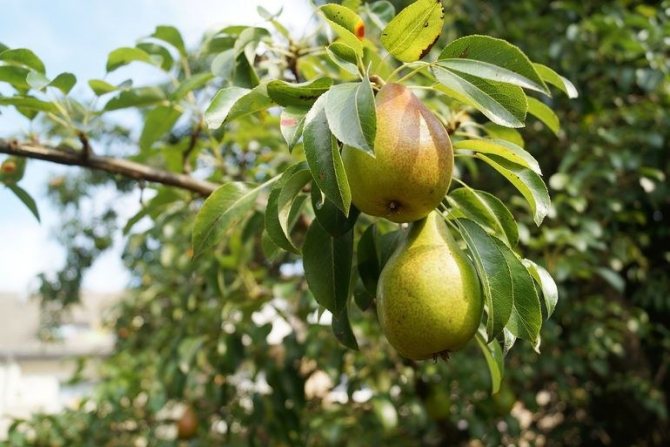

Novice gardeners in the spring, during feeding, violate the terms or technology of work. Such errors can lead to reduced yield or plant death.
The most common mistakes are:
- do not simultaneously fertilize the pear with organic and mineral fertilizers. If you feed the pear with urea, and after a few days add a solution of chicken manure, a large amount of nitrogen will flow to the roots of the plant. Excess nitrogen can cause root burns and the tree will get sick;
- during the introduction of foliar dressing, the dose of fertilizer is reduced several times. Concentrated fertilizer solutions can burn delicate foliage;
- if the gardener did not manage to feed the pear before flowering with nitrogen-containing fertilizers (urea, chicken droppings), you should not do this during the blooming of flowers or the formation of ovaries.A large supply of nitrogen will force the tree to focus on growing foliage, reducing the number of flowers and ovaries.
How to feed
You must be able to correctly calculate the dose of drugs. After all, excess has a bad effect on the pear. During the summer, she will continue to increase the green mass to the detriment of fruiting. Also, the wood will not harden. The fruits will accumulate chemical elements that, if consumed, can be harmful to health. An excess of nitrogen in the soil threatens the pear with low winter hardiness and poor ripening of fruits.
Therefore, all funds must be paid strictly according to the instructions that are indicated for 1 sq. m. of land. It should be borne in mind that a tree aged 2-4 years has a root system of about 5 square meters. m., and at 6-8 years old - 10 sq. m.
In spring, root dressings are used in liquid or dry form. To know which one to choose, one must take into account the weather conditions. In rainy weather, nitrogen is scattered over the surface of the soil and dug up. Dry - diluted with water. Then they water the soil near the trunk or bring it into special grooves that make a circle of pears. The soil for these activities must be loose.


